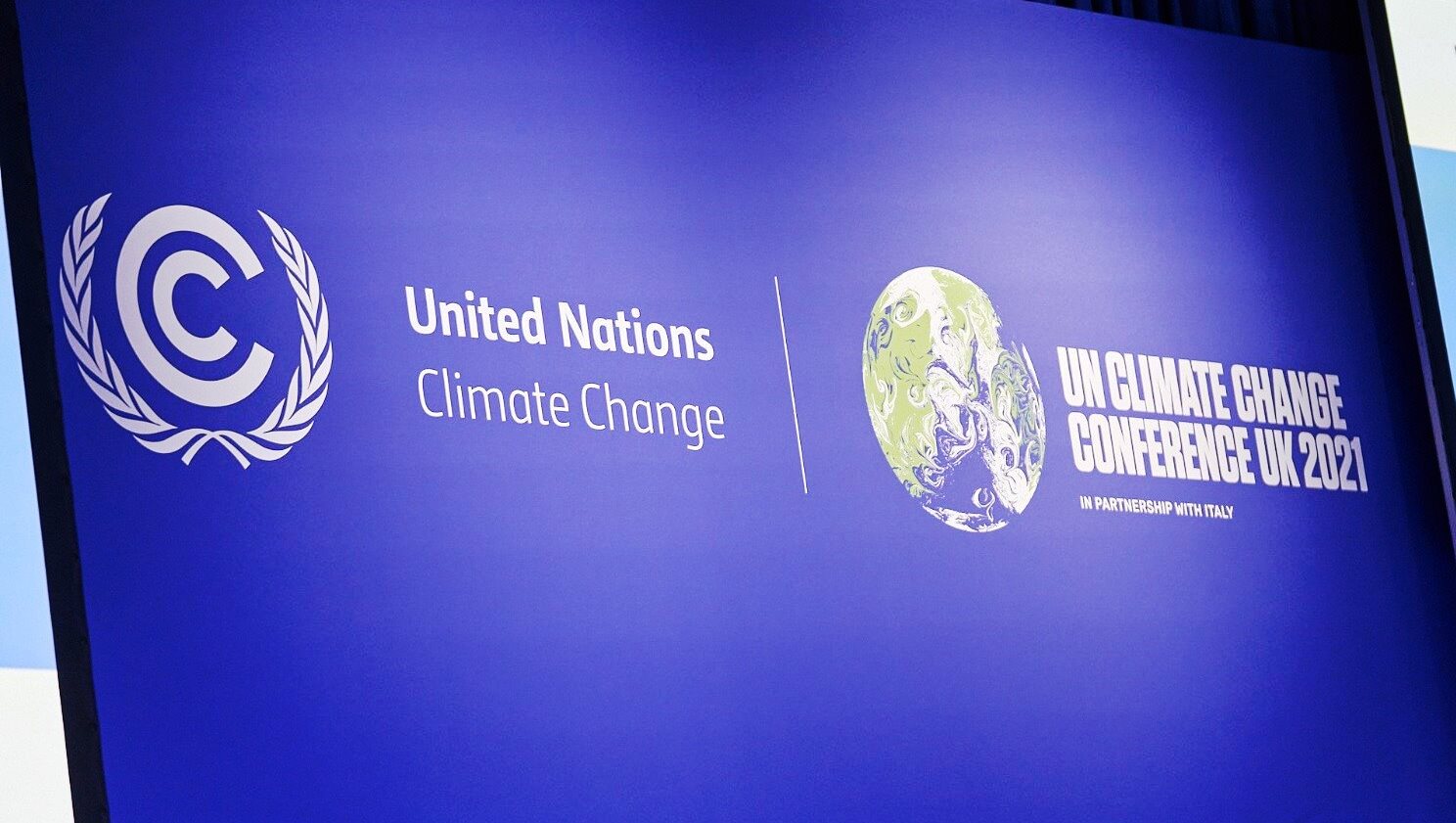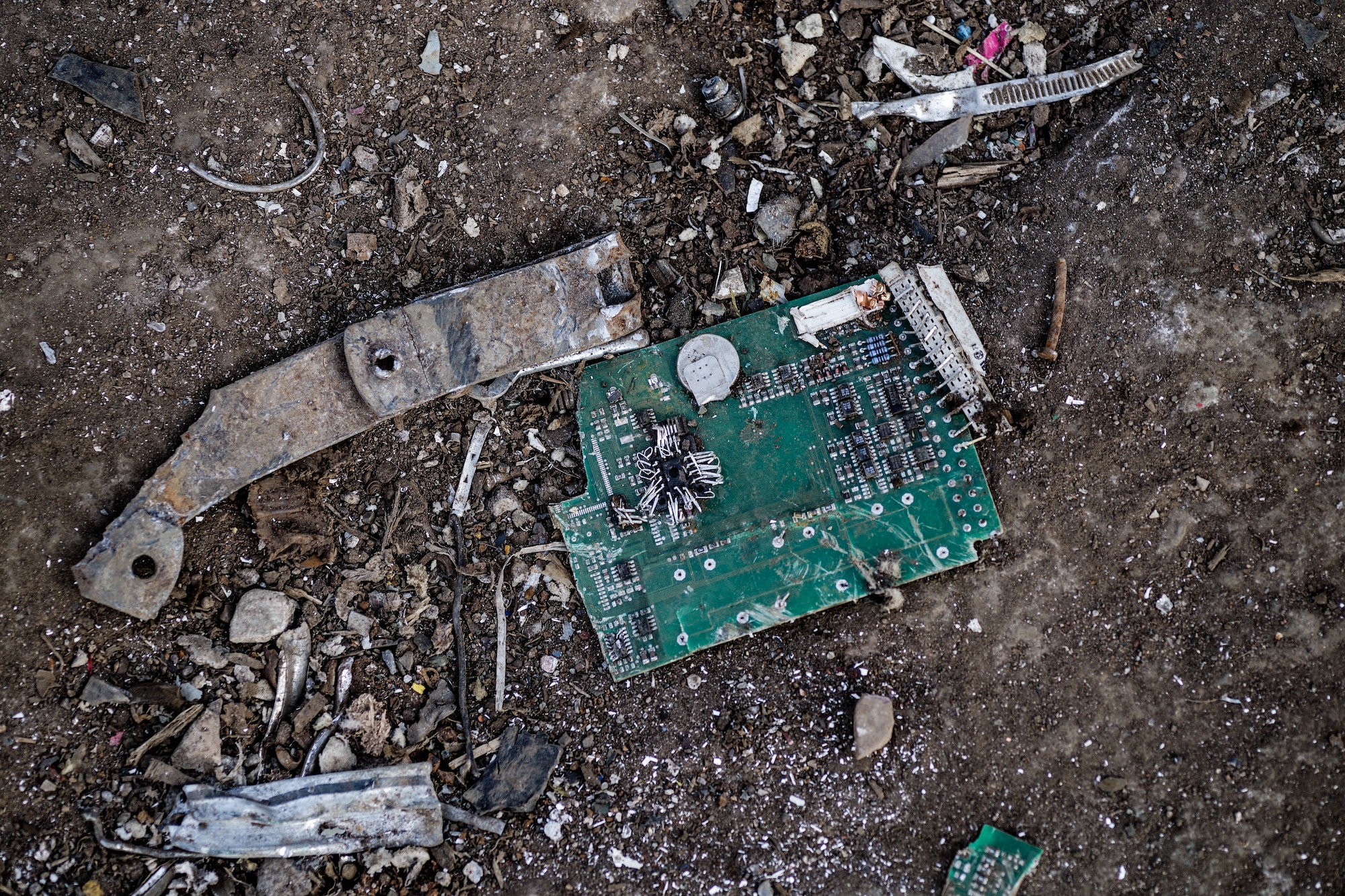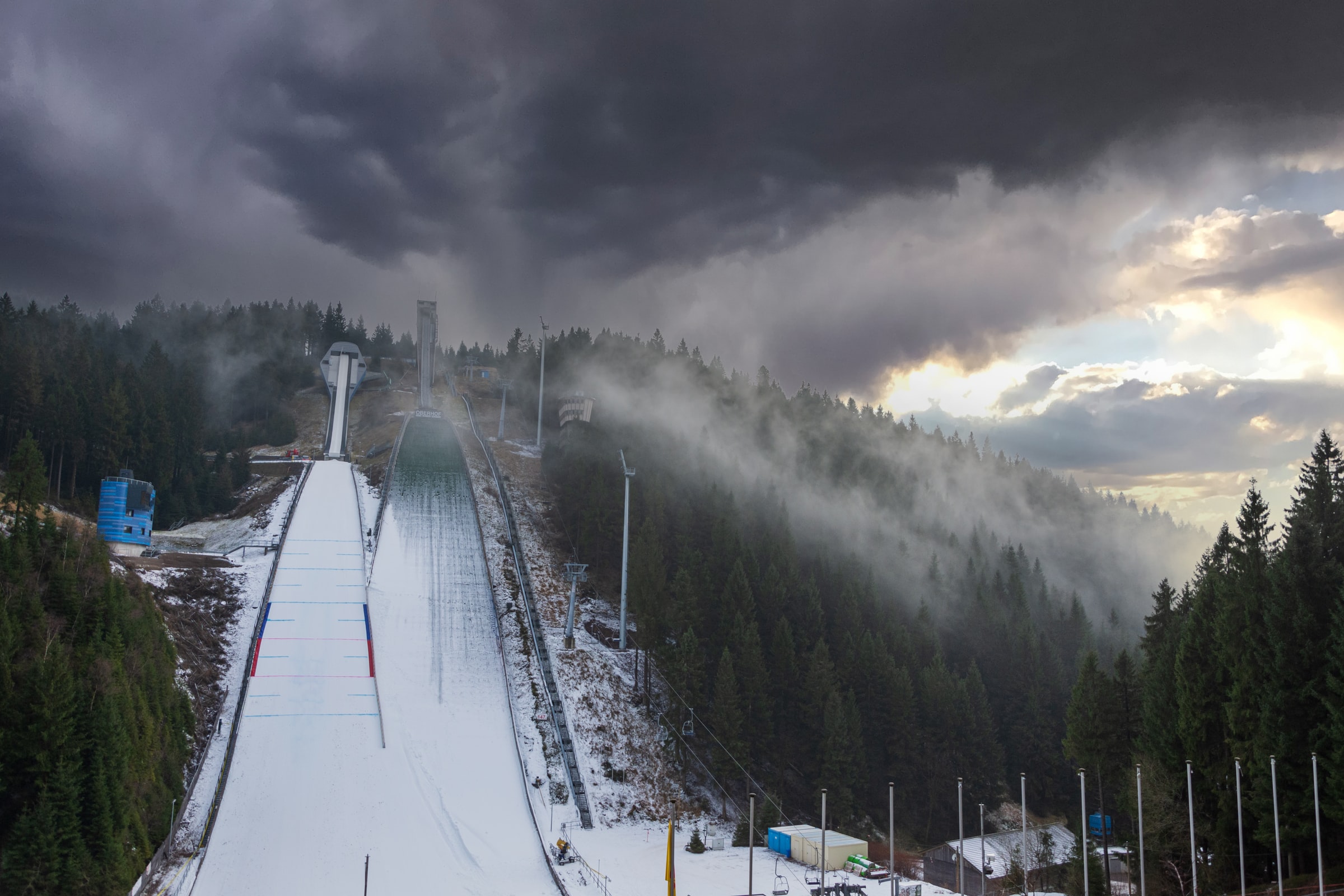The World Health Organisation paints a worrying picture: 90% of the world’s population lives in places where air quality falls short of safety standards and 4.2m people died prematurely from ailments connected to air pollution in 2016.
Estimates indicate that air pollution causes over 800,000 premature deaths in the EU alone, with countless people exposed to unsafe levels. However, tackling air pollution remains a complex issue that policymakers are often unable to address effectively. Part of the problem revolves around establishing exactly what causes air pollution and ensuring that both policymakers and the general public are well informed.
In this regard, the Covid pandemic has provided a unique natural experiment with which to analyze the air we breathe leading Valentina Bosetti, senior scientist at RFF-CMCC European Institute on Economics and the Environment, and Professor at Bocconi University, Italy.
With industry grinding to a halt and transportation reducing drastically people around the world have been talking about cleaner skies, fresher air and being able to see mountains and stars that had always been hidden by a veil of dirty air. However, scientists like Bosetti also had the chance to investigate these observations with scientific rigour and the results are not exactly what they expected.
Did Covid lockdowns reduce air pollution?
Studies in Europe and China suggest that lockdown measures led to a reduction in air pollution levels. In particular, observations of fine particulate matter (PM2.5) revealed consistent drops. According to the study published in The Lancet Planetary Health, over 80% of the Chinese territory experienced a reduction in PM2.5 concentrations, from February to March, compared to the average in the same period from 2016-2019. Europe also experienced reductions although to a much smaller degree.
We were struck by the fact that air quality wasn’t as good as we were anticipating. We didn’t see air pollution go down as much as we expected.
“We were struck by the fact that air quality wasn’t as good as we were anticipating. We didn’t see air pollution go down as much as we expected […] on some days we were even above the EU required level for safety […] that’s why we started to study the problem”, explains Valentina Bosetti.
With her colleagues, Bosetti began investigating results from background monitoring stations (those that are located far enough away from industry and urban areas so as not to be influenced by day-by-day fluctuations in pollution levels), traffic stations and industrial stations. Although all stations revealed a decrease in air pollution concentrations background stations registered a smaller decrease than expected indicating that pollution was coming from a different source than industry and transport. In background stations levels decreased by 15% in PM2.5 and 34% in NO2. In traffic stations, the decrease was more pronounced: 30% in PM2.5 and 37% for NO2. Finally, the stations that registered the largest decrease were industrial monitoring stations with approximately 70% reductions.
So, if reductions in traffic and industry were so pronounced what kept background station air pollution levels from experiencing similar falls? Where was the air pollution coming from?
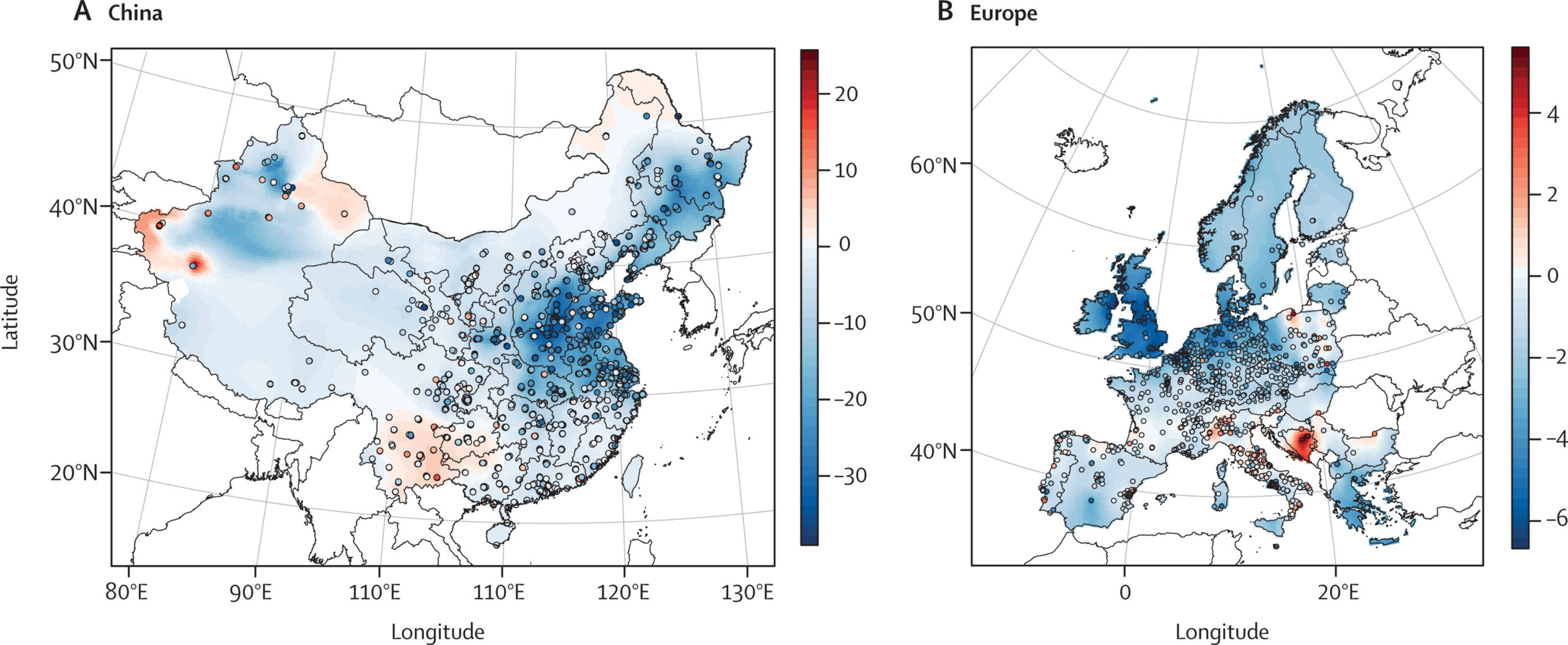
Agriculture matters
The question of why European countries saw a lower decrease in air pollution is not only to do with the fact that different countries imposed varying restrictive measures on their economies but also meteorological factors – weather is one of the main factors in determining air quality and hence concentrations of airborne particulate matter.
However, studies such as Bosetti’s also revealed a more unexpected factor in determining air quality: agriculture. The agricultural sector was not as restricted by lockdown measures. Yet what is it about agriculture that contributes to bad air quality?
“In February, March, and April there is a dispersal of animal liquids on open fields. This is a very common practice which releases a lot of ammonia. And that ammonia is a precursor of PM2.5”, explains Bosetti. “Agriculture is a huge source of PM2.5 [..] not just in Italy but also in the US.”
In this regard the Covid pandemic really allowed scientists to hone in on the contribution of agriculture to air pollution. In the case of Lombardy, this could be extremely significant as the region often struggles to remain within the safety limits prescribed by the EU which can lead to fines and other sanctions. If scientists can prove that even when industry shuts down safety levels are still surpassed then policymakers can focus on new measures to reduce agricultural emissions and make a serious case for subsidies and policies aimed at ensuring improvement in this sector.
Has Covid actually saved lives?
During the lockdown stories began to circulate claiming that Covid induced lockdowns were actually leading to more lives saved due to reduced air pollution than lives lost from the pandemic. Initial studies in China were particularly forceful in their claims that reduced air pollution was leading to a systematic reduction in premature deaths that even outweighed the lives being lost to the virus.
The Centre for Research on Energy and Clean Air posits that the improvements seen in global air quality have saved approximately 15,000 lives in 12 large cities. In Delhi alone, research indicates that approximately 4,600 people have avoided premature death from air pollution.
To date countries’ emissions have already begun to rebound. As early as July China’s air pollution levels were already exceeding pre-crisis levels.
The RFF-CMCC study led by Bosetti also sought to investigate the link between Covid induced reductions in air pollution and premature deaths. The results demonstrate that Covid caused many more deaths than were avoided due to reduced air pollution. However, it also shows that “during March, April and May the decrease in PM2.5 led to 8,000 years of life saved and decreases in NO2 led to 20,000 years of life saved […] if you want to have a sense of comparison, due to Covid we have lost 190,000 years of life”, explains Bosetti.
Looking ahead
One of the major questions is what has happened since the most stringent lockdown measures have been lifted and what will happen as the global economy attempts to recover from the pandemic.
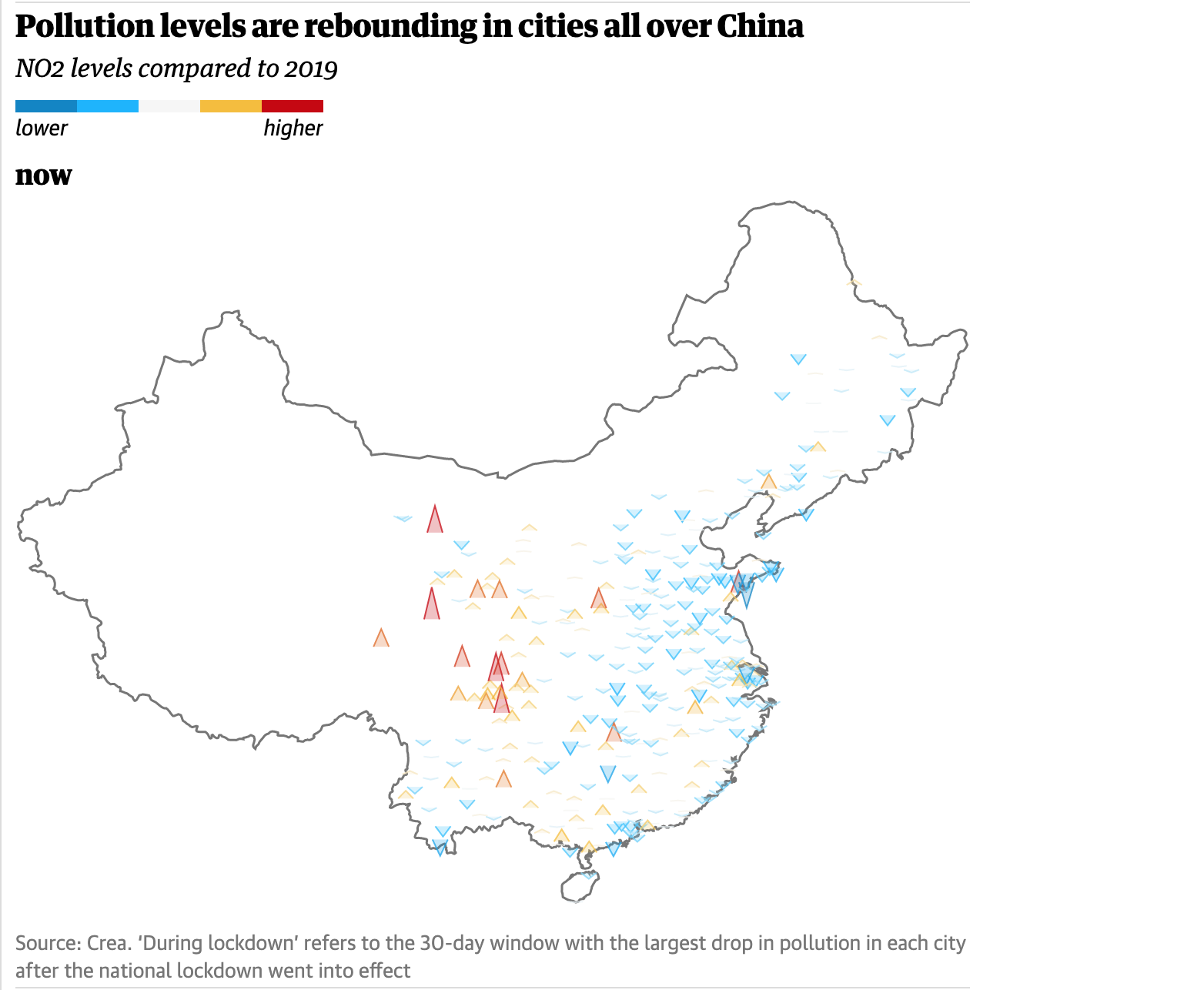
To date countries’ emissions have already begun to rebound. As early as July China’s air pollution levels were already exceeding pre-crisis levels. Although China appears to be the exception and global air pollution levels are still not back to pre-Covid levels there has been an alarming return to business as usual with experts warning that air pollution levels will soon be back to normal.
The pandemic has given us a clearer idea of what sectors are polluting and in what ways. This will allow scientists to provide the general public and policymakers with more details on the air we breathe which can help stimulate both policy and behavioural change.




